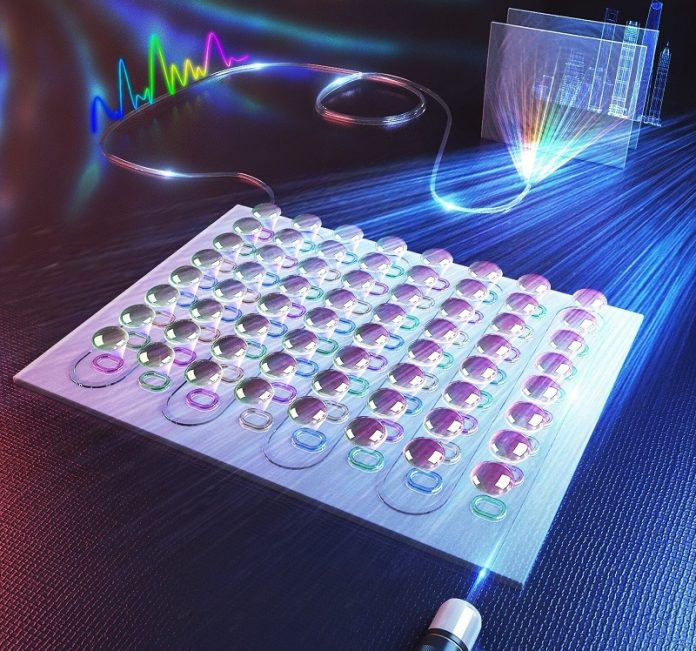
Researchers have developed a groundbreaking photonic chip that can process, transmit, and reconstruct images within nanoseconds.
This new technology could revolutionize machine vision applications like autonomous driving, industrial inspection, and robotic vision by enabling extremely high-speed image processing.
Edge computing, which involves performing complex computing tasks like image processing on local devices, is advancing with the addition of artificial intelligence (AI) for more sophisticated analysis and decision-making.
However, capturing, processing, and analyzing images for edge-based tasks such as autonomous driving is currently limited to millisecond speeds due to the need for optical-to-electronic conversions.
“Our new chip can perform all these processes in just nanoseconds by keeping them all in the optical domain,” said Lu Fang from Tsinghua University in China, the research team leader.
“This could significantly enhance or even replace the traditional method of sensor acquisition followed by AI post-processing.”
The OPCA chip: A game changer
In the journal Optica, the researchers describe their new chip, called an Optical Parallel Computational Array (OPCA) chip.
This chip has an impressive processing bandwidth of up to 100 billion pixels and a response time of just 6 nanoseconds—about a million times faster than current methods.
They used the chip to create an optical neural network that integrates image perception, computation, and reconstruction.
“The chip and optical neural network could boost the efficiency of processing complex scenes in industrial inspection and help advance intelligent robot technology to a higher level of cognitive intelligence,” said Wei Wu, co-first author of the paper. “We think it could also revolutionize edge intelligence.”
Overcoming optical to electrical conversion barriers
Machine vision traditionally involves converting optical information into digital electrical signals using sensors.
These signals are then transmitted over optical fibers for further processing. However, the frequent conversion between optical and electrical signals, along with limited advancements in electronic processors, restricts the speed and processing capacity of machine vision.
“The world is entering an AI era, but AI is very time- and energy-intensive,” said Fang. “Meanwhile, the growth of edge devices, such as smartphones, intelligent cars, and laptops, has led to an explosion of image data that needs to be processed, transmitted, and displayed.
We are working to advance machine vision by integrating sensing and computing in the optical domain, which is particularly important for edge computing and for enabling more sustainable AI applications.”
The future of machine vision
One of the main challenges in performing both image acquisition and analysis on the same chip in the optical domain is finding a way to convert free-space spatial light used for imaging into an on-chip guided light wave.
The OPCA chip overcomes this challenge, enabling end-to-end image processing, transmission, and reconstruction by integrating sensing and computing on one chip.
This innovative technology could transform machine vision, making it faster and more efficient, and paving the way for new advancements in AI and edge computing.
Source: KSR.



